Commuting Population
Place of Work
Commuting Destination
Commuting Duration
Mode of Commuting
Sustainable Modes of Commuting
Place of Work
Commuting refers to the travel of a person between his or her place of residence and his or her usual place of work. Place of work refers to whether a person worked at home, worked outside Canada, had no fixed workplace address, or worked at a specific address.
Indicators related to commuting include people with a usual place of work, and for some indicators, people with no fixed workplace address. Commuting destination includes only people with a usual place of work, while commuting duration, main mode of commuting, and time leaving for work include both people with a usual place of work and people with no fixed workplace address.
Figure 1 presents the proportions of people in the employed labour force who had either a usual place of work or no fixed workplace address, in Bruce and Grey counties and Ontario in 2016. Employed people in Grey Bruce were less likely to commute to a usual workplace than in Ontario, and about as likely not to have a fixed workplace address (people working at home or working outside Canada are not pictured).
Figure 1. Percentage of the Employed Labour Force Who Have a Usual Place of Work and Who Do Not Have a Fixed Workplace Address, Bruce County, Grey County and Ontario, 2016
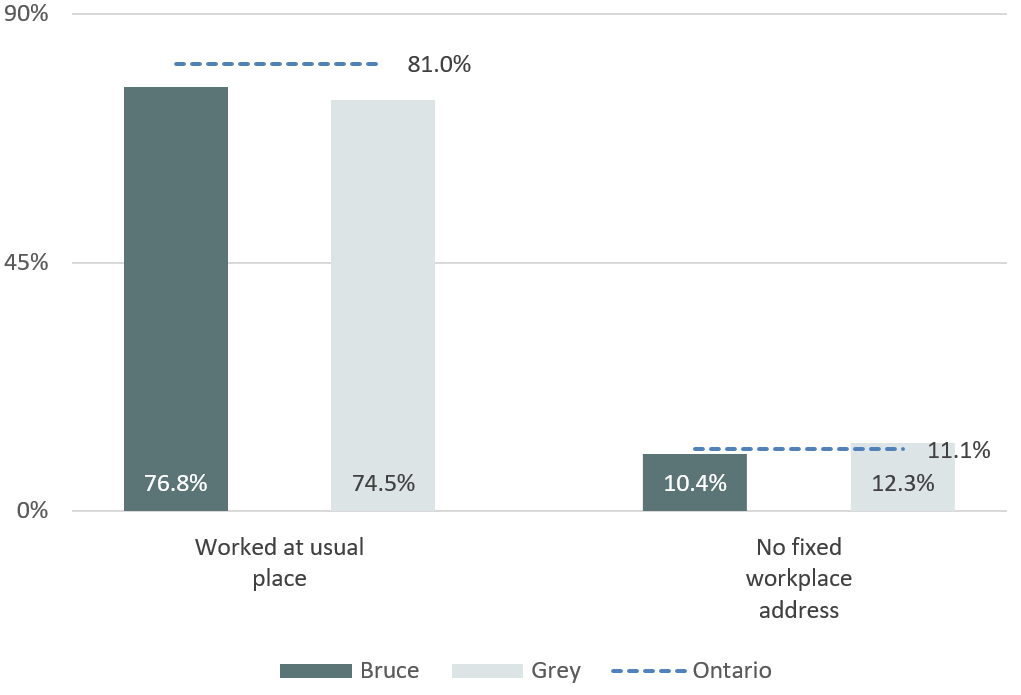
Commuting Destination
Commuting destination refers to whether or not a person commutes to another municipality (i.e. census subdivision), another census division (e.g. outside of Bruce or Grey County) or another province or territory. Figures 2 through 4 display commuting destinations among persons aged 15 and older in the employed labour force in 2016 for Bruce and Grey Counties, and Ontario. The small percentages of people who worked in another province or territory are not included.
Figure 2 displays the percentages of commuters in Bruce and Grey counties and Ontario who were commuting within their municipality (census subdivision) of residence in 2016. Commuters in Bruce and Grey counties were less likely than commuters in Ontario to commute within their municipality. This is not surprising, as Bruce and Grey counties cover a large geographic area, much of which is sparsely populated. In contrast, Ontario’s workforce is increasingly living in urban areas. The proportion of commuters commuting within their census subdivision decreased slightly between 2006 and 2016 in Grey County from 42.3% to 40.7%, and Ontario from 60% to 58%. Bruce County observed a larger decrease from 50.9% to 46.2%.
Figure 2. Percentage of the Employed Labour Force Commuting within their Census Subdivision, Bruce County, Grey County and Ontario, 2016
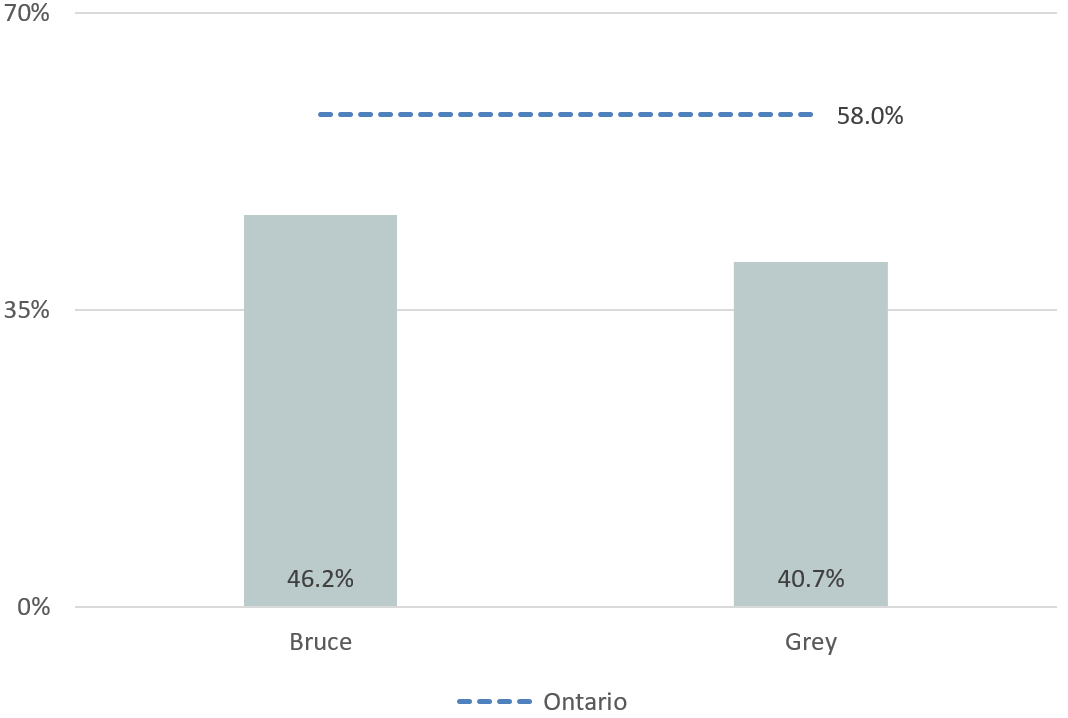
Figure 3 displays the percentages of commuters commuting to a workplace located in another municipality within their county of residence. Around 30% of commuters in both Bruce and Grey counties commuted to another municipality within their county, compared to only 16% in Ontario. Since 2006 the proportion of commuters commuting to a workplace in another municipality in their county increased in Bruce County and remained relatively stable in Grey County, and Ontario.
Figure 3. Percentage of the Employed Labour Force Commuting to a Different Census Subdivision within their Census Division, Bruce County, Grey County and Ontario, 2016
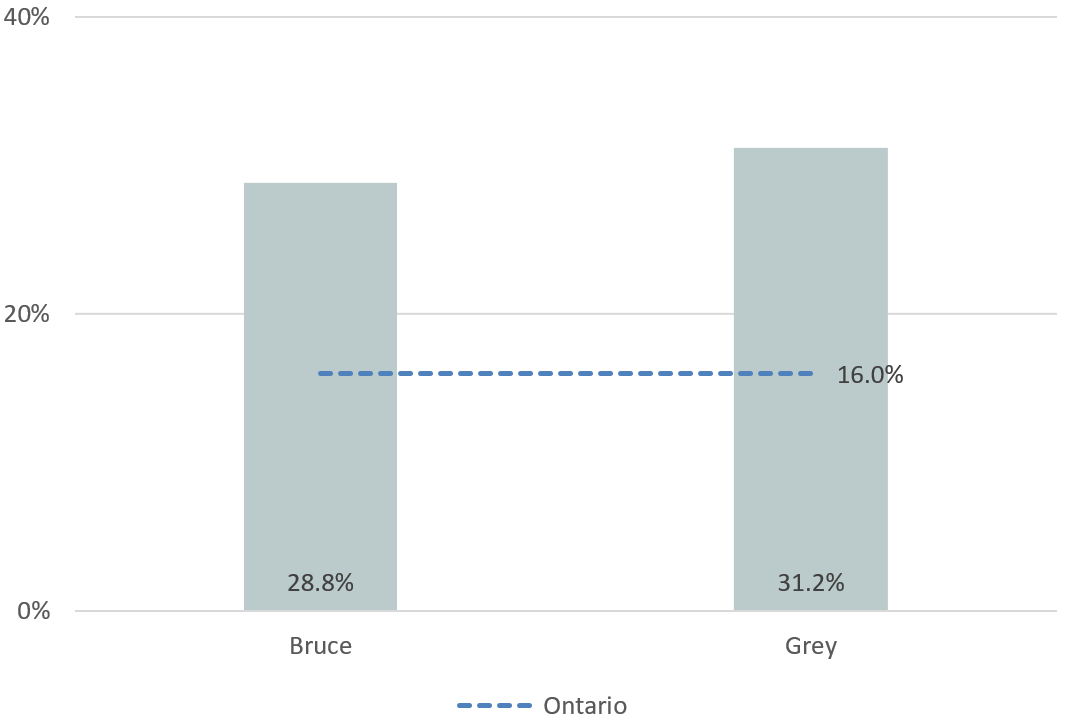
Figure 4 presents the percentages of commuters commuting to a different census division (county) in Bruce County, Grey County, and Ontario in 2016. Around one quarter of commuters commuted to a different county both locally and provincially. The proportion of commuters commuting to another county has increased slightly since 2006 both locally and provincially.
Figure 4. Percentage of the Employed Labour Force Commuting to a Different Census Division, Bruce County, Grey County and Ontario, 2016
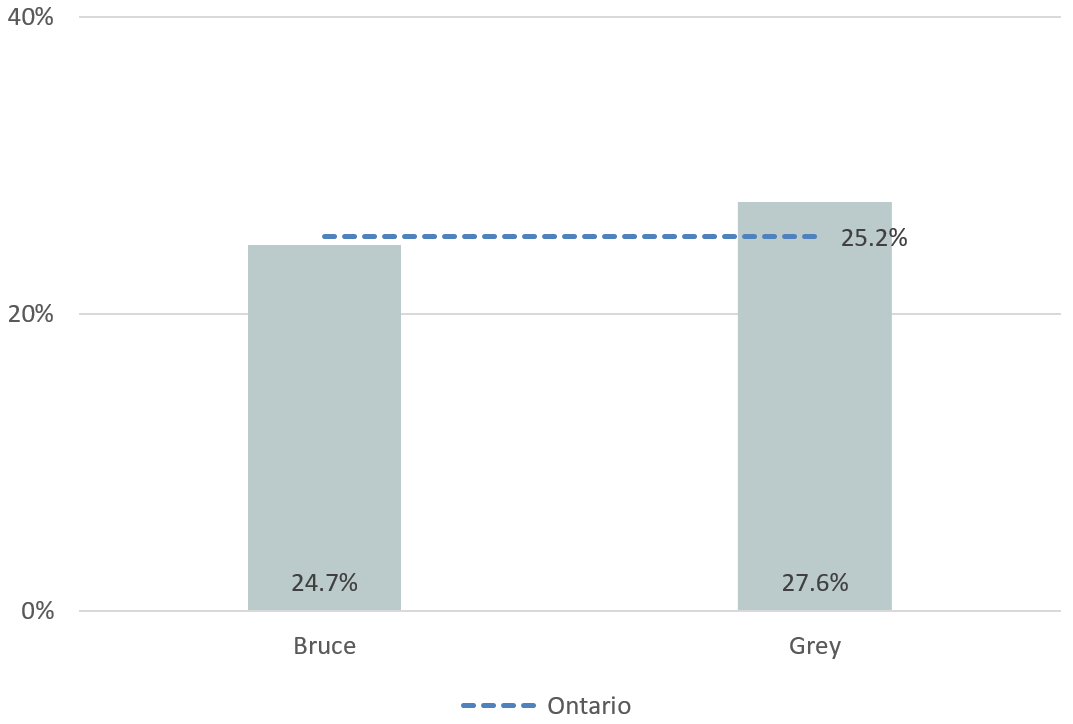
Figure 5 presents the percentages of commuters commuting within their municipality of residence, to a different municipality within their county of residence, and to a different county in Grey Bruce municipalities in 2016. The percentage of commuters commuting to a workplace in their municipality ranged from 80.4% in Kincardine to 13.1% in Chatsworth. This percentage was lower than Ontario in most Grey Bruce municipalities, except Kincardine, Owen Sound, Northern Bruce Peninsula, and Hanover.
The percentage of commuters commuting to a different municipality within their county ranged from 66.2% in Chatsworth to 10.5% in Hanover. This percentage was higher than the Ontario percentage in most Grey Bruce municipalities. Chatsworth had the highest percentage of commuters commuting to a different municipality in the same county, at 66.2%, followed by Georgian Bluffs, Huron-Kinloss, and Meaford. The percentage of commuters commuting to another county ranged from 6.5% in Kincardine to 67.8% in Southgate. About half of Grey Bruce municipalities had a higher percentage of commuters commuting to a different county than Ontario. The municipalities where relatively few commuters commute to another county tend to be those that do not share a border with a neighbouring county.
Figure 5. Employed Labour Force by Commuting Destination, Grey Bruce Municipalities 2016
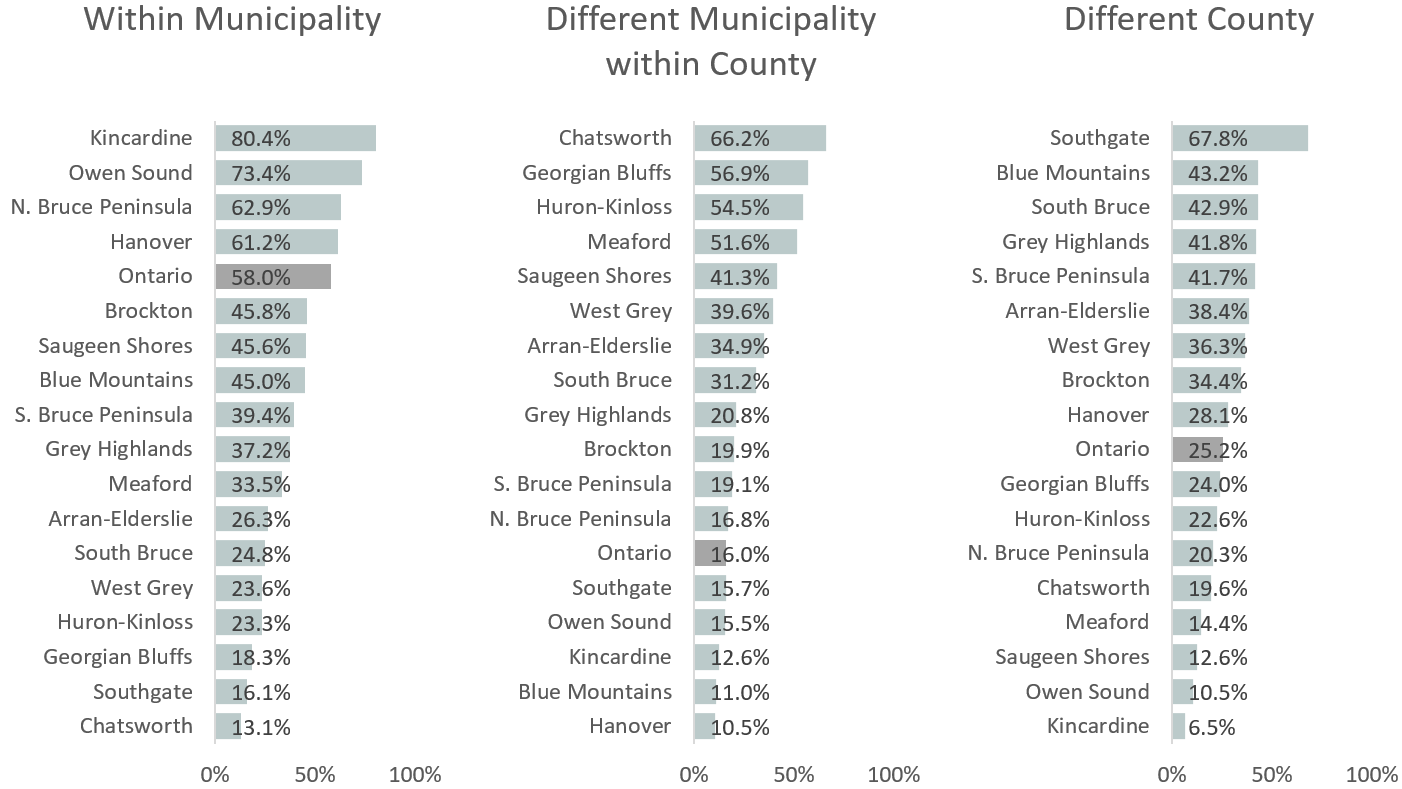
Commuting Duration
'Commuting duration' refers to the length of time, in minutes, usually required by a person to travel between his or her place of residence and his or her place of work (one-way). Lengthy commutes, particularly in a private vehicle, have been associated with poor mental and physical health outcomes. [1,2] Commute times in Grey Bruce tend to be shorter than Ontario, despite fewer people in Grey Bruce commuting within their municipality. This may be due in part to very few people in Grey Bruce taking public transit, which involves longer commuting times on average. [3] This information is collected in May and does not reflect seasonal differences in commuting duration, which are likely to vary in areas such as Grey Bruce where adverse weather frequently complicates driving conditions.
Figure 6 displays commute times for the employed labour force in Bruce and Grey counties, Ontario, and Canada in 2016. About 38% of commuters in both Bruce and Grey counties have a commute that is less than 15 minutes long, which is high relative to Ontario. Thirty-one percent of commuters in both counties spent 15 to 29 minutes getting to work, which is similar to the Ontario percentage.
Commuters who spent between 30 and 44 minutes getting to work made up 18.5% of commuters in Bruce County and 15.2% in Grey County- lower than the provincial percentage, though only slightly in Bruce County. Around 6% of commuters in both counties spent 45 to 59 minutes getting to work, slightly lower than Ontario. Five percent of Bruce County commuters spent an hour or longer getting to work, which is lower than Grey County, at 9.8%, as well as Ontario. Male commuters tended to have longer commutes than female commuters (see full report for details).
Figure 6. Employed Labour Force by Commuting Duration, Bruce County, Grey County and Ontario 2016
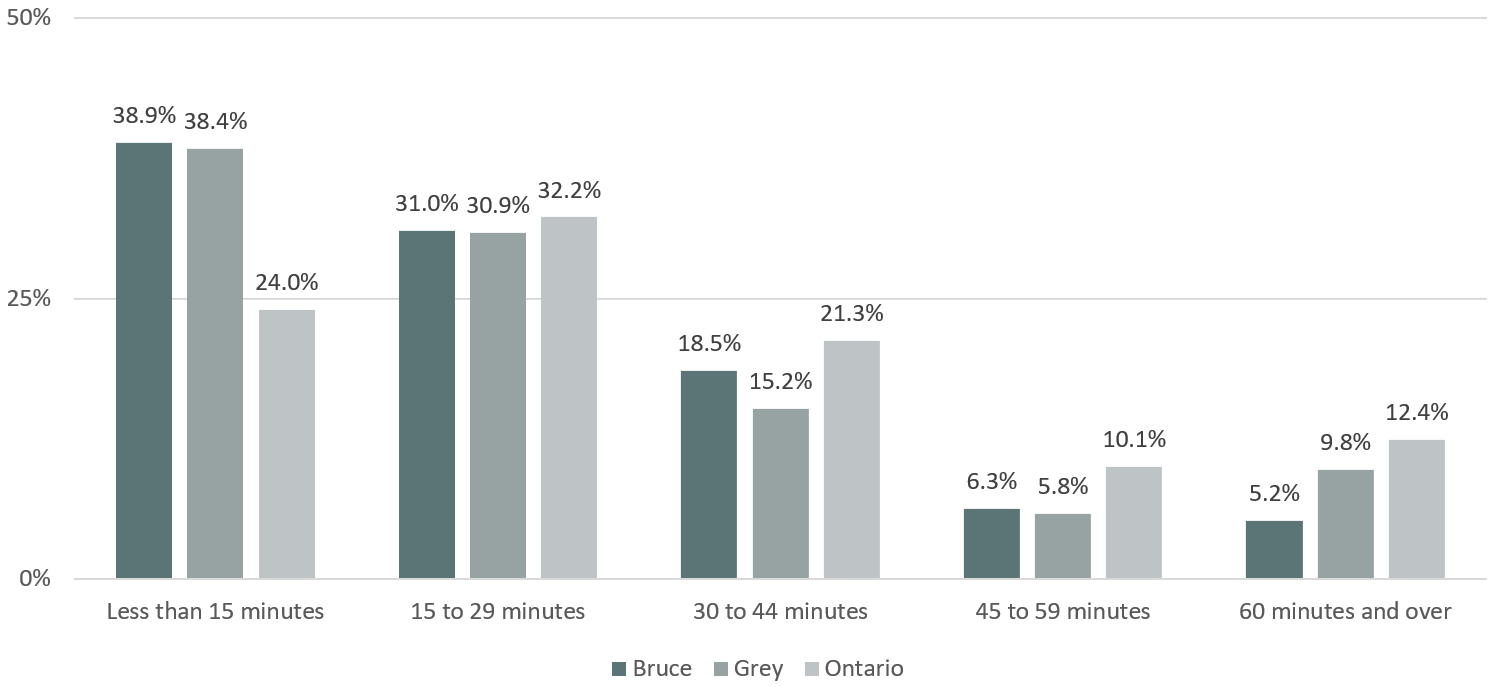
Figure 7 presents the percentages of commuters in Grey Bruce municipalities whose commute usually lasted 30 to 44 minutes, 45 to 59 minutes, or one hour or longer commuting in 2016. Municipalities with a higher percentage of commuters commuting between 30 to 44 minutes than Ontario included Chatsworth, South Bruce Peninsula, Saugeen Shores, Grey Highlands, Huron-Kinloss, and Arran-Elderslie. About half of Grey Bruce municipalities had a higher percentage of commuters commuting between 45 and 59 minutes than Ontario. Finally, municipalities where relatively more commuters were commuting for an hour or longer than Ontario included Southgate, Grey Highlands, and West Grey. Southgate had a particularly high percentage of commuters commuting for an hour or longer, at one in five commuters.
Figure 7. Employed Labour Force Commuting 30 to 44 Minutes, 45 to 59 Minutes, and 60+ Minutes, Grey Bruce Municipalities, 2016
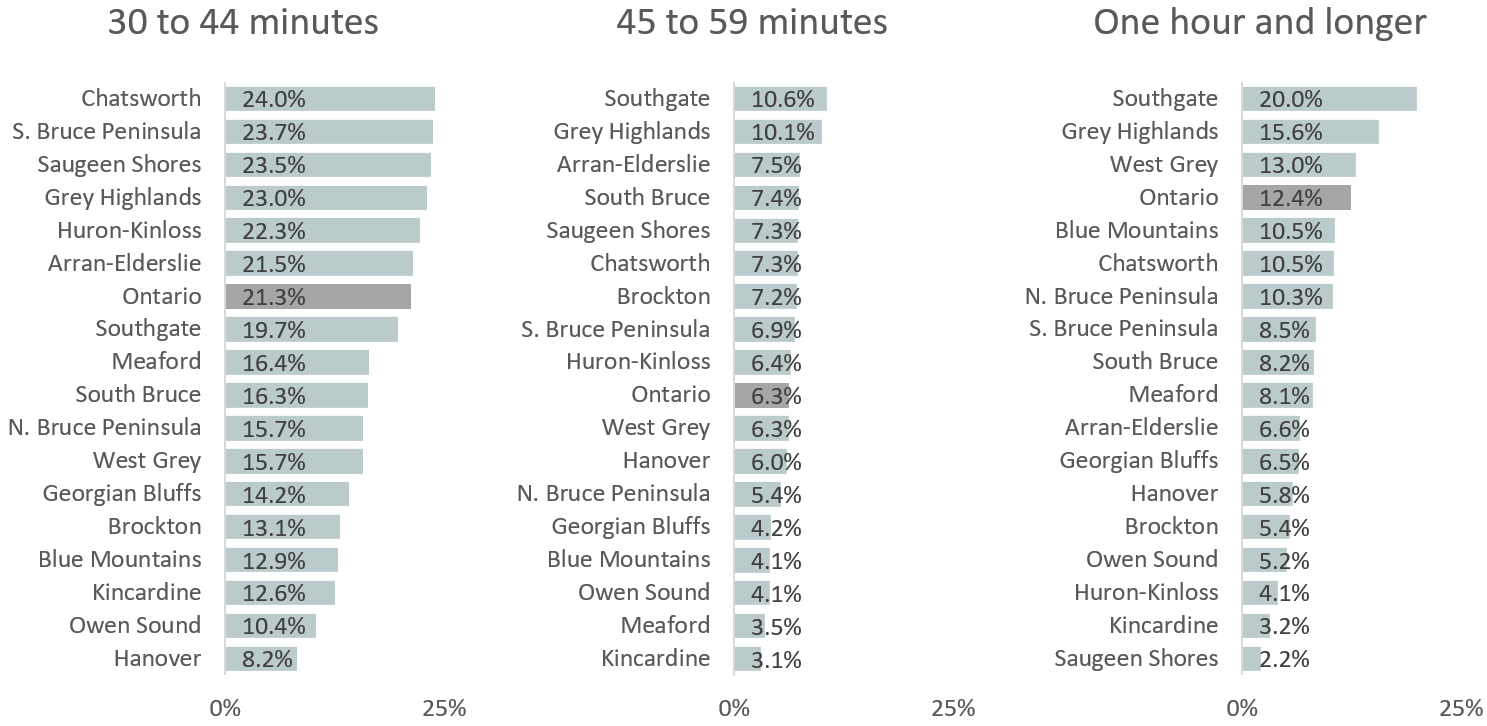
Mode of Commuting
'Main mode of commuting' refers to the main mode of transportation a person uses to travel between his or her home and his or her place of work. Figure 8 displays the percentage of commuters in the employed labour force whose main mode of commuting was a car, truck, or van as a driver (not a passenger), in Bruce and Grey Counties and Ontario in 2006 and 2016. Driving to work in a car, truck or van was the main mode of commuting among 86% of commuters in Bruce County and 84% in Grey County in 2016. This was the main mode of commuting among most Ontarian commuters as well, but was less prominent relative to Bruce and Grey counties. Between 2006 and 2016 driving a car, truck or van became more popular as a primary mode of transportation among local commuters, while remaining relatively stable provincially.
Figure 8. Percentage of the Employed Labour Force Driving a Car, Truck, or Van as a Main Mode of Commuting, Bruce County, Grey County and Ontario, 2006 and 2016
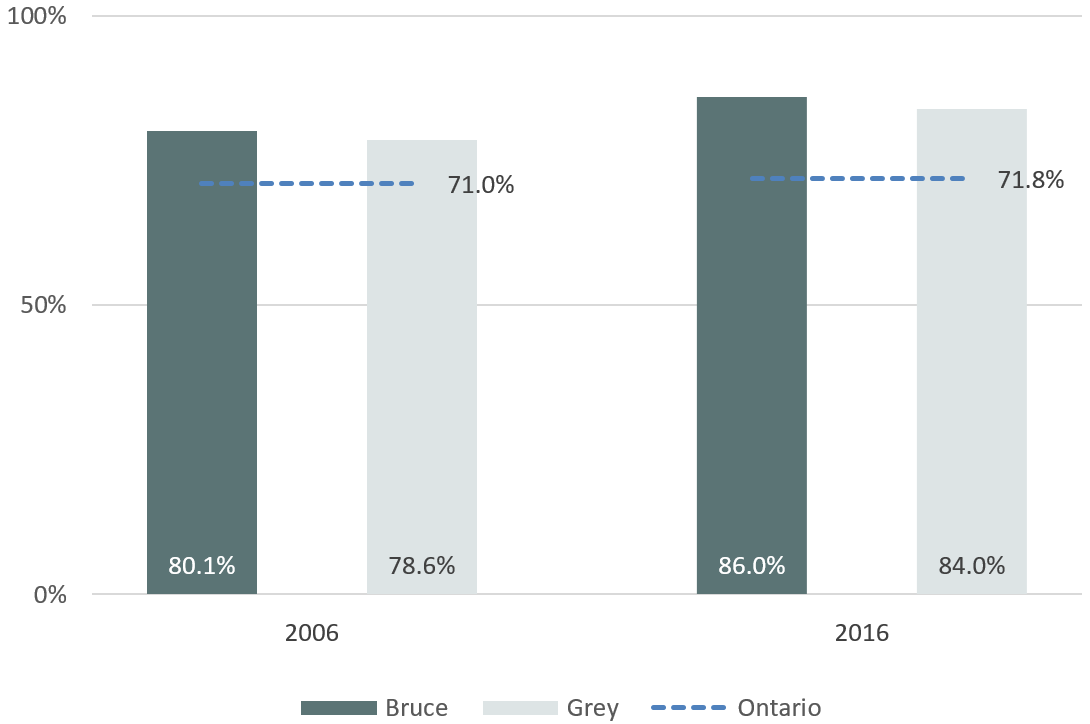
Sustainable Modes of Commuting
Table 1 presents the percentages of commuters in the employed labour force whose main mode of commuting was a mode other than in a car, truck or van as a driver in 2016 and 2006. These are also known as “sustainable modes of commuting”. Between 2006 and 2016 sustainable modes of commuting became less popular among local commuters.
The major difference in transportation modes between local commuters and Ontario commuters is that far fewer local commuters use, or have access to, public transit. Public transit is found where populations are large enough to justify the costs of the infrastructure, while Grey Bruce’s population is distributed between rural areas and small population centres. The percentage of commuters whose main mode of transportation was public transit decreased locally between 2006 and 2016, and increased provincially.
People who walked or bicycled to work made up 6.6% of commuters in Bruce County in 2016, which was similar to Ontario. Grey County had a slightly higher percentage of people who walked or bicycled to work in 2016 at 7.6%. Between 2006 and 2016 the proportion of commuters who walked or bicycled to work remained relatively stable in Ontario, and decreased in Bruce and Grey counties. Carpooling (two or more commuters in a private vehicle) decreased between 2006 and 2016 to a similar extent both locally and provincially and using some other mode of transportation such as a motorcycle or taxi remained stable provincially and decreased locally.
Table 1. Sustainable Modes of Commuting, Ontario, Bruce County and Grey County, 2006 and 2016
|
|
Ontario
|
Bruce
|
Grey
|
|
Main Mode of Commuting
|
2006
|
2016
|
Change
|
2006
|
2016
|
Change
|
2006
|
2016
|
Change
|
|
Car, truck or van as passenger
|
8.3%
|
6.1%
|
|
8.3%
|
6.0%
|
|
9.2%
|
6.6%
|
|
|
Public Transit
|
12.9%
|
14.6%
|
|
1.2%
|
0.7%
|
|
1.2%
|
0.8%
|
|
|
Walked or Bicycled
|
6.8%
|
6.5%
|
|
8.9%
|
6.6%
|
|
9.5%
|
7.6%
|
|
|
Other Method
|
1.0%
|
1.0%
|
=
|
1.5%
|
0.8%
|
|
1.5%
|
1.1%
|
|
Figure 9 displays the percentage of commuters in the employed labour force whose main mode of commuting was walking or bicycling, for each Grey Bruce municipality in 2016. Many Grey Bruce municipalities had a similar or greater proportion of commuters who usually walked or bicycled to work when compared to Ontario. Owen Sound and Hanover had the greatest proportions of commuters who walked or bicycled to work, at around 13%.
Figure 9. Percentage of Commuters Whose Main Mode of Commuting was Walking or Bicycling, Grey Bruce Municipalities, 2016
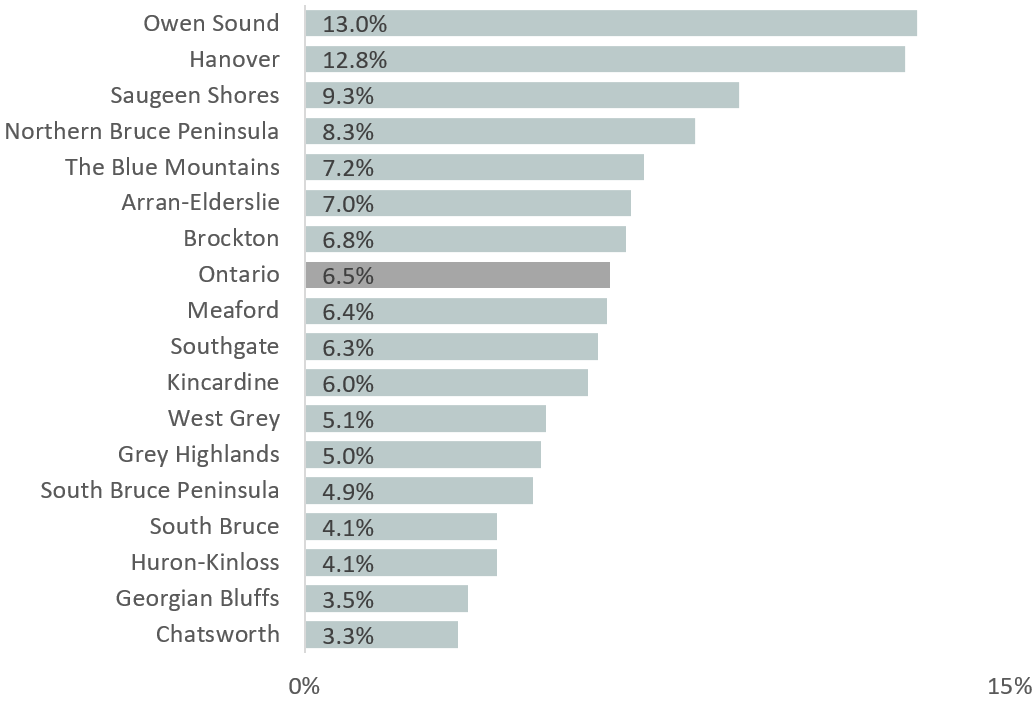
Read the full report here: Census Release VI Journey to Work
Terms
Place of Work Status
Place of work refers to whether a person worked at home (including persons who live and work on the same farm, building superintendents, and teleworkers who spend most of their work week working at home), worked outside Canada (such as diplomats and Armed Forces personnel), had no fixed workplace address (such as building and landscape contractors, travelling salespersons, and independent truck drivers) or worked at a specific address.
Employed Labour Force
Refers to the population aged 15 and older who held a job at the time when the census was conducted
References
[1] Hansson, E., Mattisson, K., Björk, J., Östergren, P., & Jakobsson, K. (2011). Relationship between commuting and health outcomes in a cross-sectional population survey in southern Sweden. BMC Public Health, 11, 834.
[2] Hoehner, Barlow, Allen, & Schootman. (2012). Commuting Distance, Cardiorespiratory Fitness, and Metabolic Risk. American Journal of Preventive Medicine, 42(6), 571-578.
[3] Statistics Canada. November 29, 2017. The Daily. http://www.statcan.gc.ca/daily-quotidien/171129/dq171129c-eng.htm
Sources:
Statistics Canada. 2017. Various Geographies. Census Profile - Age, Sex, Type of Dwelling, Families, Households, Marital Status, Language, Income, Immigration and Ethnocultural Diversity, Housing, Aboriginal Peoples, Education, Labour, Journey to Work, Mobility and Migration, and Language of Work for Canada, Provinces and Territories, Census Divisions and Census Subdivisions. 2016 Census. Statistics Canada Catalogue no. 98-401-X2016054. Ottawa. Released November 29, 2017 http://www5.statcan.gc.ca/olc-cel/olc?ObjId=98-401-X&ObjType=2&lang=en&Limit=0 (accessed November 29, 2017).
Definitions: Statistics Canada, 2016. Dictionary, Census of Population 2016. http://www12.statcan.gc.ca/census-recensement/2016/ref/dict/index-eng.cfm